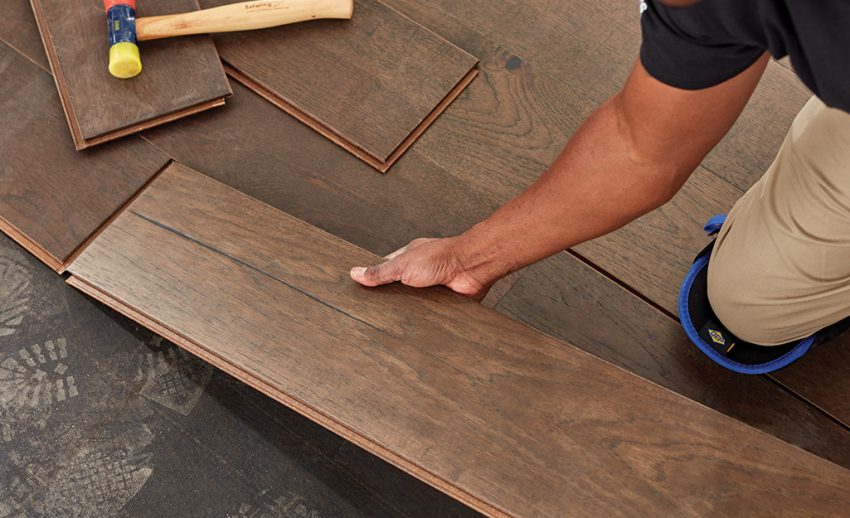Hardwood flooring is a timeless choice for homeowners seeking elegance, durability, and warmth in their homes. However, installing hardwood floors can be a complex task, and doing it right is crucial to achieving the desired result. In this comprehensive guide, we’ll explore the best methods for hardwood floor installation and answer essential questions to help you make informed decisions.
Why Install Hardwood Flooring?
Beauty and Elegance
One of the primary reasons homeowners choose hardwood flooring is its unmatched beauty and elegance. Hardwood floors add a touch of sophistication to any room, making it an excellent choice for both traditional and contemporary interiors.
Durability and Longevity
Hardwood floors are renowned for their durability and longevity. When properly maintained, they can last for generations, making them a valuable investment for your home.
Easy Maintenance
Compared to other flooring options, hardwood floors are relatively easy to maintain. Regular sweeping and occasional refinishing can keep them looking pristine for years.
Improved Indoor Air Quality
Hardwood flooring doesn’t trap allergens like carpets do, making it an ideal choice for those with allergies. It promotes better indoor air quality, creating a healthier living environment.
Increased Home Value
Installing hardwood floors can increase the resale value of your home. Many homebuyers prefer homes with hardwood flooring, making it a smart investment for potential resale.
What is the Best Hardwood Floor Installation Method?
Choosing the right installation method is crucial for a successful hardwood floor installation. The three main methods are:
1. Nail-Down Installation
Nail-down installation involves securing each hardwood plank to the subfloor using nails or staples. This method is commonly used for solid hardwood floors and provides excellent stability.
2. Glue-Down Installation
In a glue-down installation, hardwood planks are adhered directly to the subfloor using a strong adhesive. This method is suitable for engineered hardwood flooring and concrete subfloors.
3. Floating Installation
Floating installation involves attaching individual planks together rather than securing them to the subfloor. This method is suitable for engineered hardwood floors and is often chosen for its ease of installation.
The best method for your project depends on factors such as the type of hardwood flooring you choose and the condition of your subfloor.
How Do You Install Hardwood Flooring on Concrete?
Installing hardwood flooring on a concrete subfloor requires special consideration and the use of engineered hardwood. Here are the basic steps:
- Prepare the Subfloor: Ensure the concrete subfloor is clean, dry, and level. Repair any cracks or imperfections.
- Moisture Barrier: Lay down a moisture barrier to prevent moisture from seeping into the hardwood. This is crucial to prevent warping and damage.
- Install Underlayment: Apply an underlayment suitable for hardwood flooring. This helps with insulation and noise reduction.
- Acclimate the Hardwood: Allow the hardwood flooring to acclimate to the room’s temperature and humidity levels for at least 72 hours.
- Begin Installation: Follow the installation method (nail-down, glue-down, or floating) suitable for engineered hardwood on concrete.
- Finish and Seal: Once the installation is complete, apply the finish and sealant for protection and a polished look.
What Do You Put Under Hardwood Flooring?
Underlayment plays a crucial role in hardwood floor installation. It provides insulation, noise reduction, and a smooth surface for the hardwood to adhere to. Common underlayment materials include:
- Felt: Felt underlayment is excellent for noise reduction and moisture protection.
- Cork: Cork underlayment provides natural insulation and is eco-friendly.
- Foam: Foam underlayment is cost-effective and easy to install.
The choice of underlayment material depends on your specific needs and the type of hardwood flooring you’re installing.
For more information on hardwood floor installation and home improvement tips, visit HomeMotivated.com.
How Thick is Hardwood Flooring?
The thickness of hardwood flooring typically ranges from 3/8 inch to 3/4 inch. Thicker hardwood flooring is more durable and can be sanded and refinished multiple times. Thinner options are suitable for areas with lower foot traffic.
How Thick is Hardwood Floor Underlayment?
The thickness of underlayment varies depending on the material and brand. However, standard underlayment thickness ranges from 1/8 inch to 1/4 inch. Be sure to follow the manufacturer’s recommendations for the specific underlayment you choose.
In conclusion, hardwood floor installation is a valuable investment that enhances the beauty, durability, and value of your home. Choosing the right installation method, preparing the subfloor correctly, and selecting suitable underlayment are crucial steps in achieving a successful installation. With proper care and maintenance, your hardwood floors will continue to shine for years to come.
